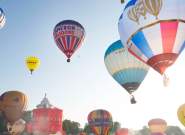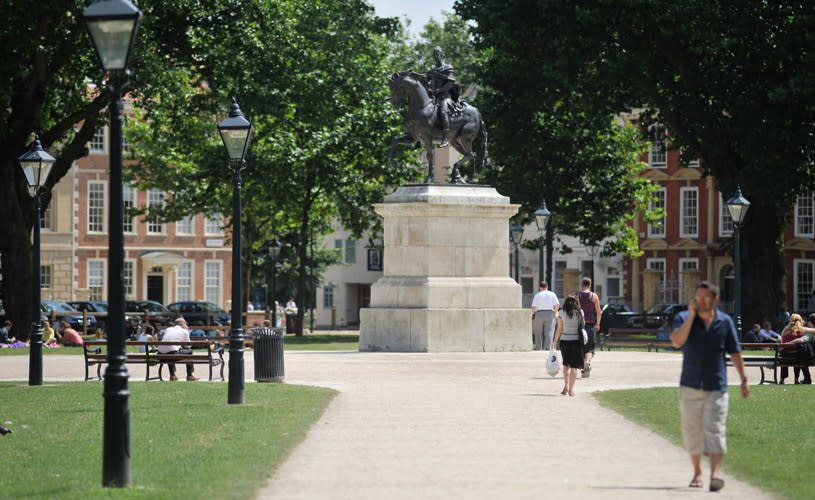We thought we’d delve back into the past and look at Bristol’s noteworthy connections with the USA - from famous explorers to the naming of America, Hollywood stars to religious founding fathers. Here's some great trivia we think will surprise locals and visitors alike.
The First American Thanksgiving
Berkeley Castle has an extremely significant connection with this celebration - the first American Thanksgiving was held by Berkeley men. A Berkeley Company ship, The Margaret, departed Bristol and landed on the coast of Virginia, USA in 1619, where they gave thanks for their ship's safe arrival – the original thanksgiving. The land, Berkeley Hundred, is now part of Charles City County. This was a year earlier than the Pilgrim Fathers’ Mayflower voyage (1620), widely considered to be the first celebration.
- Read more in this National Geographic article: The Thanksgiving before the 'first' Thanksgiving

Image: Berkeley Castle
Bristol, the ‘Birthplace of America’
Bristol has been described as 'the Birthplace of America.' In 1497, John Cabot and his crew set sail from Bristol aboard The Matthew, hoping to find a new route to the Orient. Instead, he landed on the coast of Newfoundland, becoming the original documented 'discoverer' of North America (not Christopher Columbus as many people believe). Today a replica of his ship, The Matthew, is moored on Bristol’s Harbourside - explore for free or take your own voyage of discovery on a tour of the harbour.
Richard Amerike, former Sheriff of Bristol, funded Cabot’s voyage and it’s thought Cabot named his discovery after him as a thank you. Intriguingly, Amerike’s coat of arms features stars and stripes similar to the United States flag - a design which pre-dates George Washington's connection with the continent by 300 years (whose family arms had a similar motif). Go and see for yourself - the coat of arms can be found in the Lord Mayor's Chapel on College Green in central Bristol.

Image: The Matthew in the Cumberland Basin, credit Nick Greville
The discovery of America
Built in 1897 to commemorate John Cabot’s discovery of North America four hundred years prior, Cabot Tower sits atop Brandon Hill. Head here for some of the loveliest panoramic views of Bristol and its Harbourside. A second Cabot Tower exists on Signal Hill, in St. John's, Newfoundland and Labrador, Canada. It was built in 1898 to commemorate the 400th anniversary of Cabot's discovery and Queen Victoria's Diamond Jubilee.

Image: Cabot Tower in Brandon Hill Park, credit Chris Bahn
Famous American friends
Berkeley Castle has been home to the Berkeley family for over 900 years. This long-living and prolific family consequently has Berkeley connections all over the world. 'Friends' star, Courteney Cox visited the castle in an American ancestry series after 700-year old documents allowed her to trace her roots back to 1327. It turns out her 18-times great-grandfather Thomas III Lord Berkeley, third baron of Berkeley was the owner of Berkeley Castle. It was during this time that the castle was used to imprison (and allegedly kill) the deposed King Edward II.

Image - the lily pond in the grounds of Berkeley Castle, credit Angharad Paull
Pennsylvania’s founder
St John’s Chapel in St Mary Redcliffe Church, now known as The American Chapel, holds the tomb and armour of Admiral Sir William Penn (the father of Pennsylvania's founder) who was born in Bristol. The giant whale bone next to the chapel is a souvenir brought back to the city by Cabot following his North America discovery expedition. The story of the voyage is depicted in stained glass in the church and a brass monument in honour of Richard Amerike's daughter. is also displayed.

Image: St Mary Redcliffe Church
Transatlantic crossings between Bristol and New York in the Victorian era
The SS Great Britain was an advanced passenger steamship designed for transatlantic service between Bristol and New York by daring Victorian engineer, Isambard Kingdom Brunel. She was built and launched in Bristol in 1843. 175 years ago, in 1845, she was the first iron steamer to cross the Atlantic and she was also the largest vessel of the time. She transformed travel to America and on her maiden voyage to the United States she easily broke previous speed records.
These days the magnificently-restored ship sits on Bristol's Harbourside in the very same dry dock in which she was built. Bristol has more modern links with fast travel to New York, being the home of Concorde in the UK. Concorde’s supersonic speed meant that the average journey time from London to New York was cut to just under three and a half hours, a huge improvement on the 14 days of the SS Great Britain!
- Step aboard the last Concorde to fly and find out about Bristol's aviation heritage at Aerospace Bristol
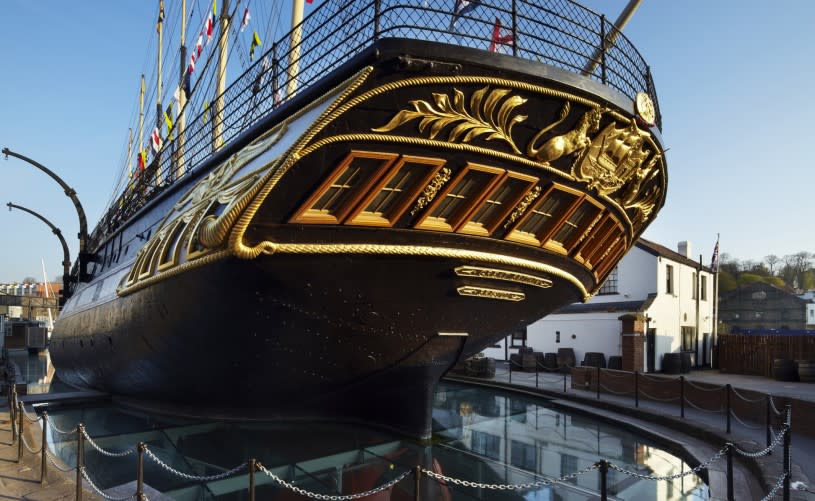
Image: Brunel's SS Great Britain, credit David Noton
Methodism’s founding father
John Wesley’s New Room in the heart of Bristol Shopping Quarter is the world’s first and oldest Methodist chapel. When John Wesley preached a sermon from Hanham Mount in 1739, he became one of the founding fathers of Methodism. A plaque near the pulpit states how Wesley ordained Thomas Coke in 1784, who then went to America and ordained Francis Asbury. Both became Bishops of the Methodist Episcopal Church in America and spread the Methodist religion in the States. The pair sailed from Pill, near Bristol and a monument to their voyage stands in the village.
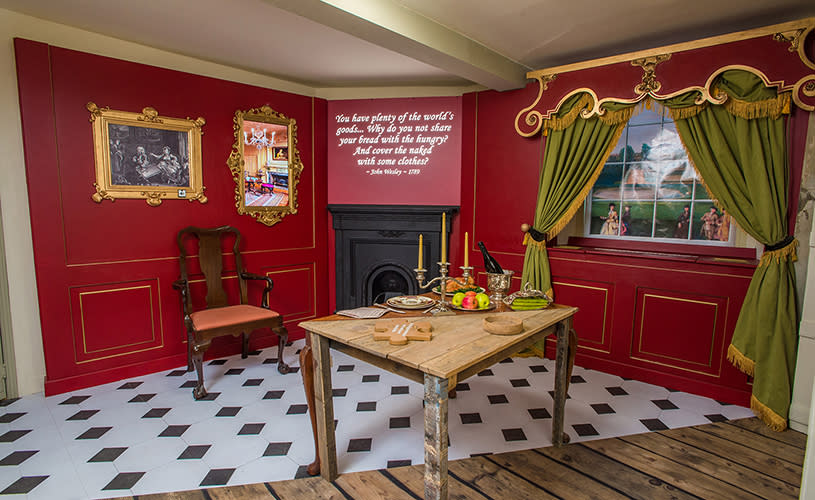
Image: John Wesley's The New Room
Bristol, the American Colonies and Translatlantic Slavery
Bristol played a significant role in England's maritime trade in tobacco, wine, cotton and other goods and there were very strong trade links between Bristol and the USA and its colonies. From the late 1600s to the early 1800s, many slave-related voyages sailed out of Bristol and there are nods to this past around the city - Pero’s Bridge on Bristol's Harbourside, is named after Pero Jones, the African servant of a plantation owner. Incidentally you can also visit his master's house, now The Georgian House Museum, to see how an 18th century plantation owner would have lived. Visitors to Bristol can also discover more about the city's historic links to slavery at the M Shed museum on the Harbourside, with artefacts including a statue of the Bristolian slaver Edward Colston that once stood on the city centre prior to its removal in June 2020 by protestors supporting the Black Lives Matter movement.
- Read more about Bristol and the legacy of Transatlantic Slavery
Today the Harbourside buzzes with an entirely different energy. Restaurants, bars and galleries line the water’s edge, boats ferry people up and down the river and some of Bristol’s best attractions, such as We The Curious, Bristol Aquarium, Brunel's SS Great Britain, Arnolfini, Underfall Yard and The Matthew all lie within easy reach.
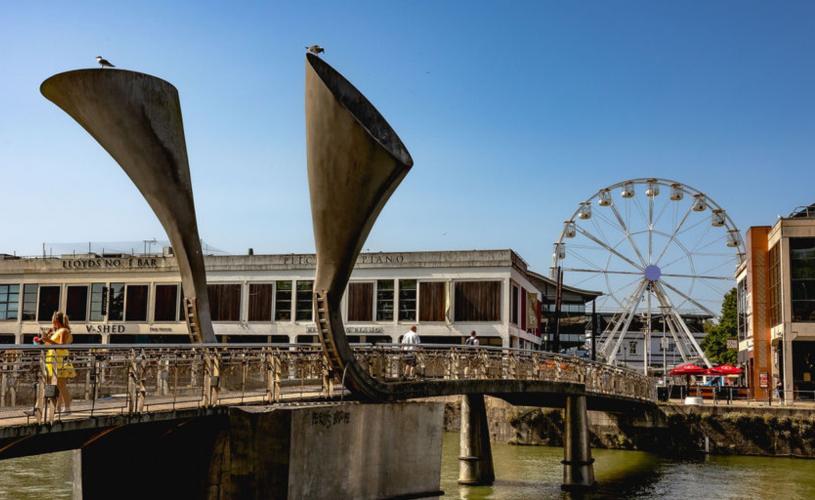
Image: Pero's Bridge
Blackbeard the Pirate
According to legend, The Llandoger Trow - Bristol's oldest pub - was Pirate Captain Blackbeard's drinking hole. Previously known as Edward Teach, the infamous Bristol-born buccaneer terrorised the West Indies and eastern coast of the US before meeting his demise in America in 1718, when he was captured and killed by the Governor of Virginia and his soldiers. An anchor from Blackbeard's ship, Queen Anne's Revenge, was recently discovered off the coast of North Carolina.
Blackbeard once had a hideaway cave under St Mary Redcliffe church and his birthplace and childhood home still stands on Bristol's Harbourside. The Llandoger Trow is still open to this day, so be sure to follow in Blackbeard's footsteps and stop by for a pint!

Image: The Llandoger Trow
Bristolian Hollywood film star
Archibald Leach, otherwise known as Cary Grant, was born and raised in Bristol. A blue plaque recognises the house he lived in on Hughenden Road in Horfield before he left for the USA and gained US citizenship there in 1942. Grab theatre tickets from Bristol Hippodrome and see where Grant began his career as a backstage boy, visit a statue honouring the actor in Millennium Square, and look out for the biennial Cary Grant Comes Home Festival, celebrating this remarkable actor's journey from Bristol to Hollywood.

Image: Cary Grant pointing to the Clifton Suspension Bridge, credit Bristol Evening Post
Only museum of Americana outside the USA
The American Museum & Gardens near Bristol is the only museum of Americana outside the United States. Visitors are taken on a journey through the history of America, from its early settlers to the twentieth century and its remarkable collection of folk and decorative arts show the diverse nature of American traditions. Based at the beautiful Claverton Manor, there are also extensive grounds, which include an arboretum of American trees.
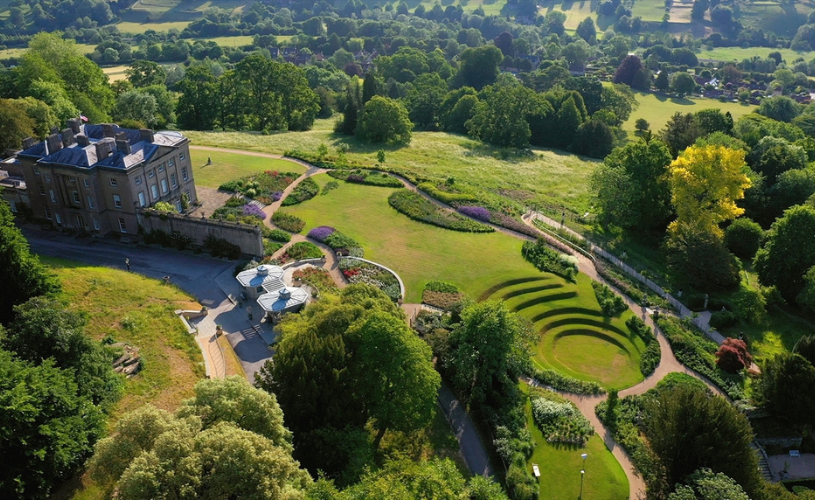
Image: American Museum & Gardens
First American Embassy
Pay a visit to green, leafy Queen Square and stroll by number 37 to see where the first American Embassy was established in 1792, after the American Revolution. A plaque on the wall states Elias Vanderhorst of South Carolina was appointed by George Washington as the first US Consul.
Image: Statue of William III in the middle of Queen Square, credit Tamany Baker
Bits of Bristol in New York
During World War Two, American supply ships needed ballast to make the return trip to the USA. There was plenty of rubble for them to fill their ships with in Bristol, as the city had suffered heavy bombing. On arrival in New York, they dumped these former bits of Bristol in an area of the East River. The area is now known as the ‘Bristol Basin’ and has been built upon, meaning that a part of New York City is constructed on fragments of Bristol. A plaque in each city commemorates the unusual connection - find their locations here.
Ancestor of the first President of the USA
Colonel Henry Washington, one of George Washington’s ancestors, fought on the Royalist side in the English Civil War (1642-51) and was involved in the capture of the city of Bristol in 1643. There is a plaque marking this at the top of Park Street.
Bristols around the globe
The first other 'Bristol' was founded in Massachusetts in 1632 by Bristolian, Robert Aldworth. There are 35 populated places in the world called Bristol, of which 29 are in the United States. Come and visit the original in the UK!

Image: Flag of the United States of America
Bristol politician turned New York Senator
Henry Cruger (whose portrait hangs in the Lord Mayor’s Mansion House in Clifton) was MP for Bristol in 1774, Mayor of Bristol in 1781 and subsequently became a Senator for the State of New York in 1792.
The annual Bristol Renaissance Faire, Wisconsin
Queen Elizabeth I came to Bristol in 1574, an event not often thought about here, but celebrated in style in the Wisconsin city of Kenosha every summer since the late 1980s. A rollicking romp through Elizabethan England, visitors can expect 16th century games, rides, arts, crafts, food, music, and pub crawls, plus one-of-a-kind encounters with a spectacular cast of characters. Read more about it here.

